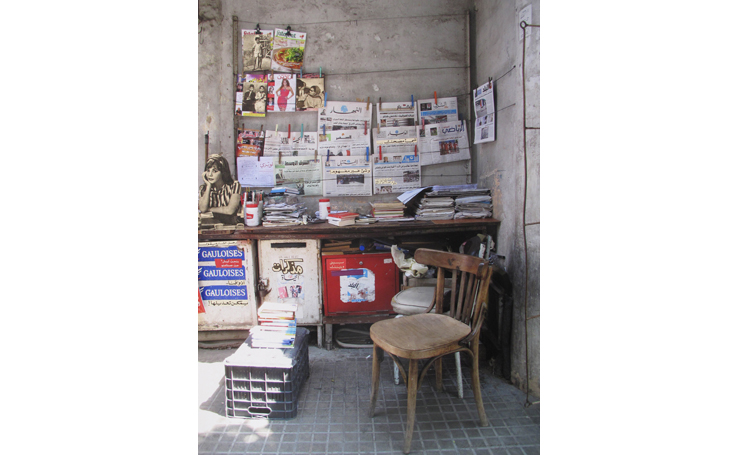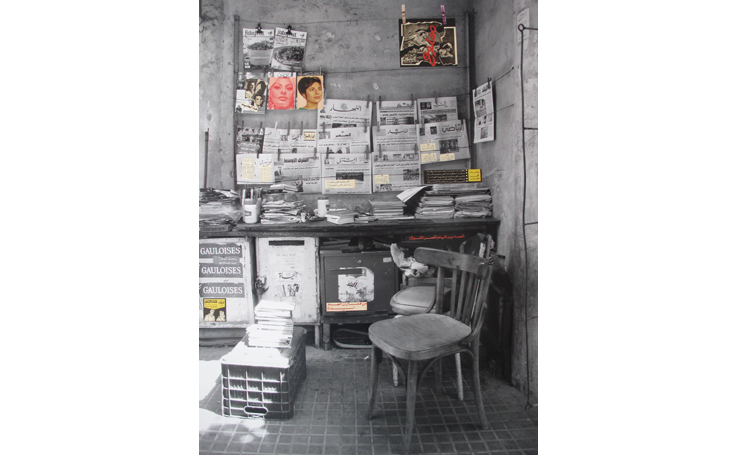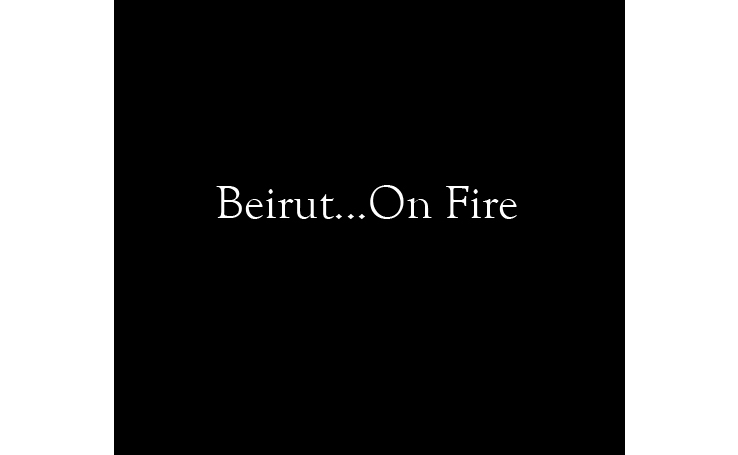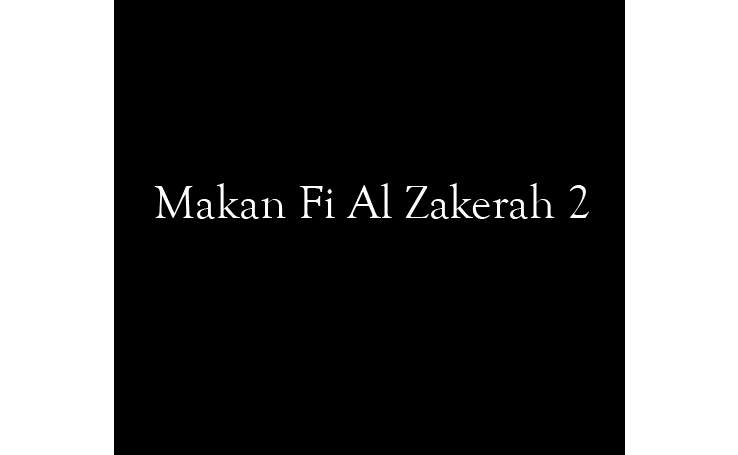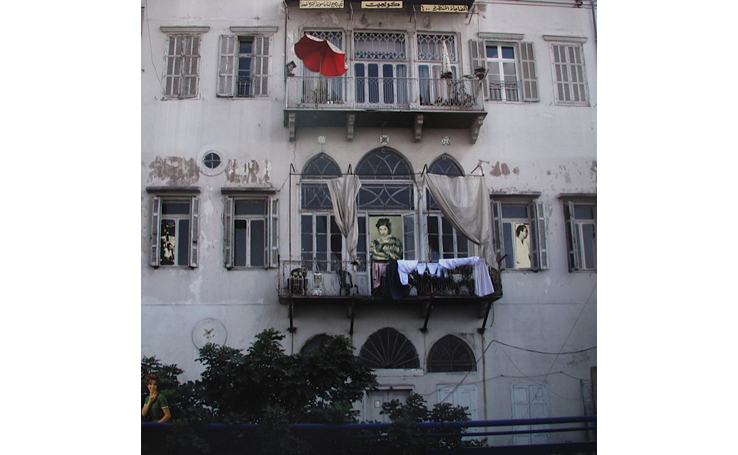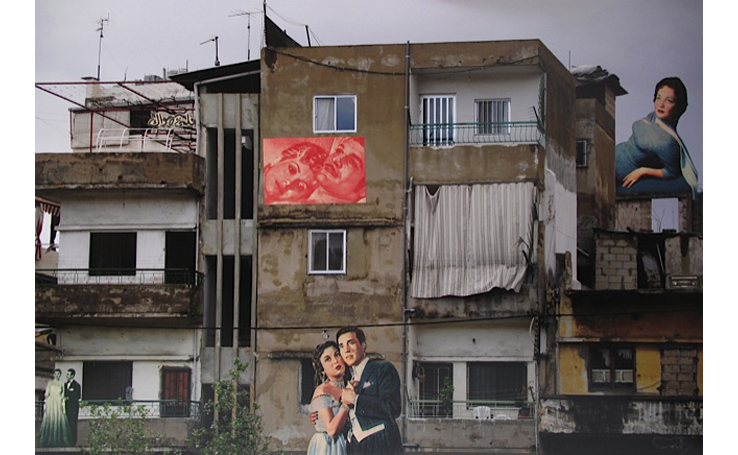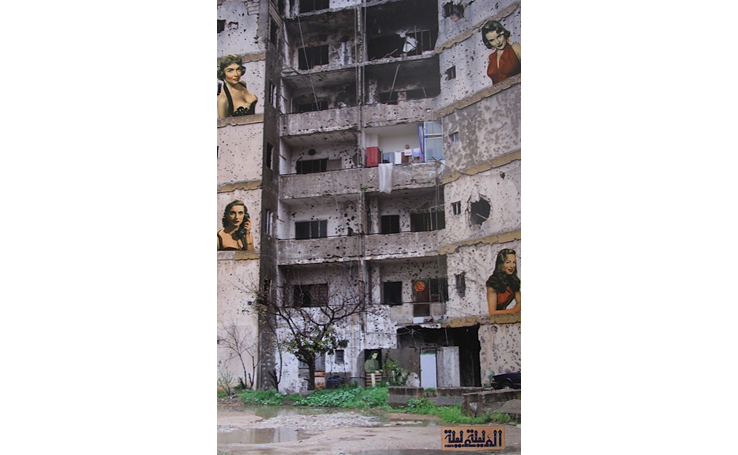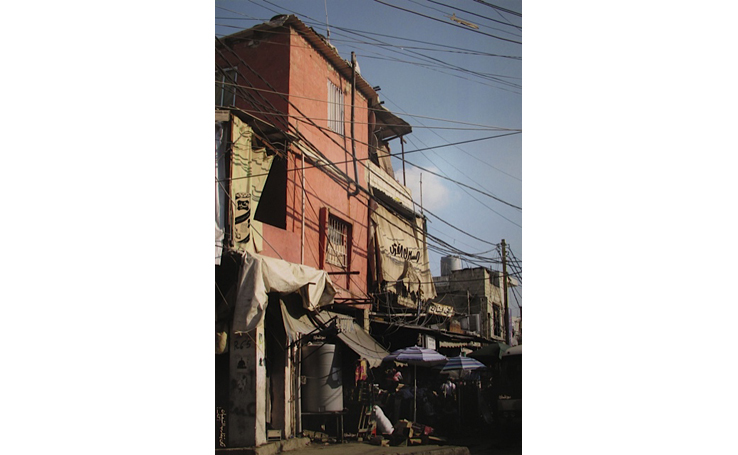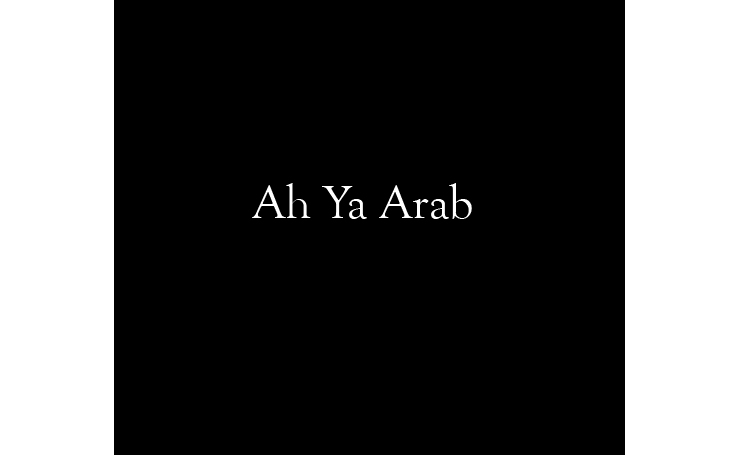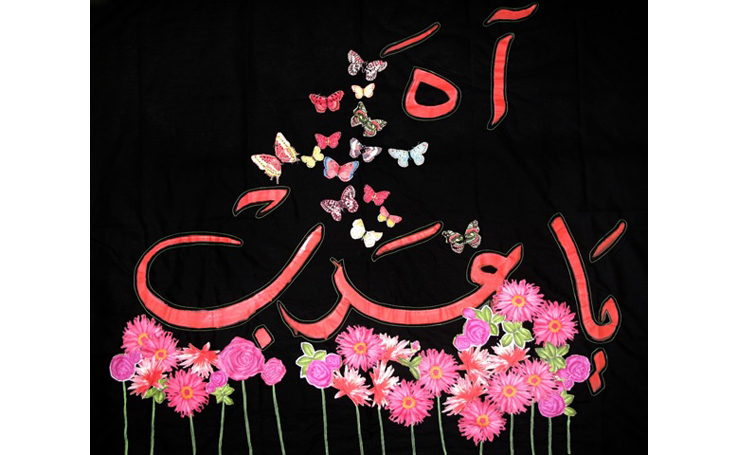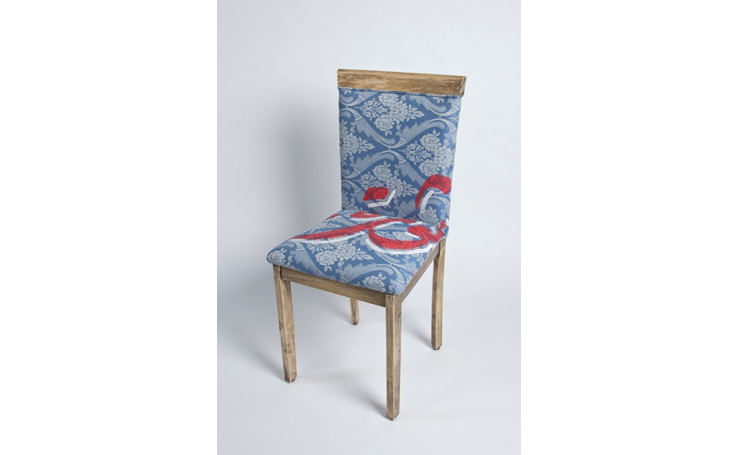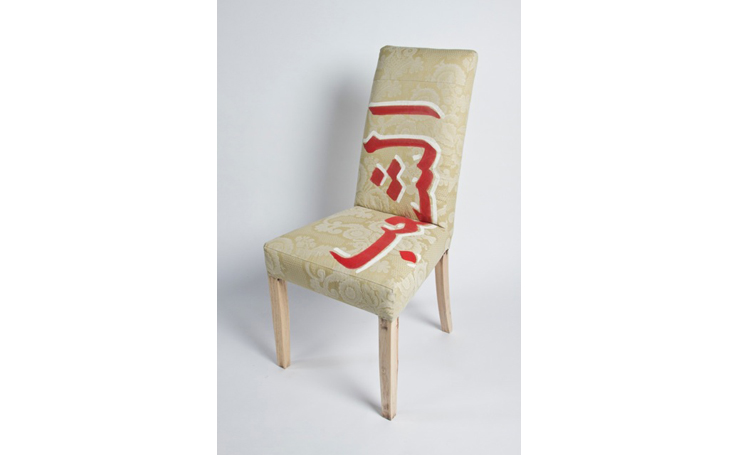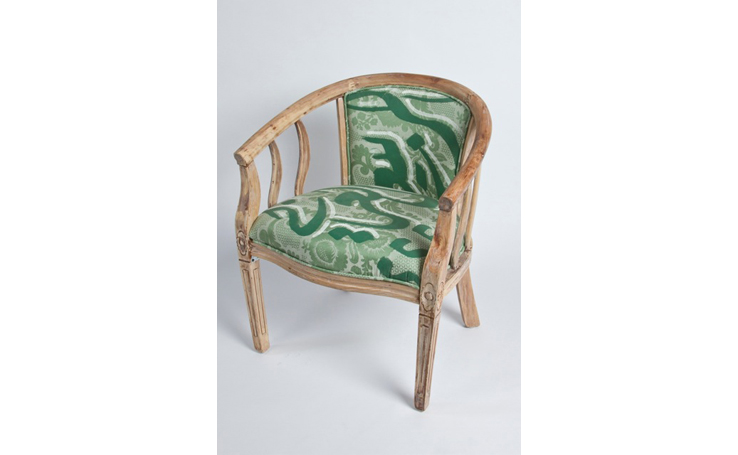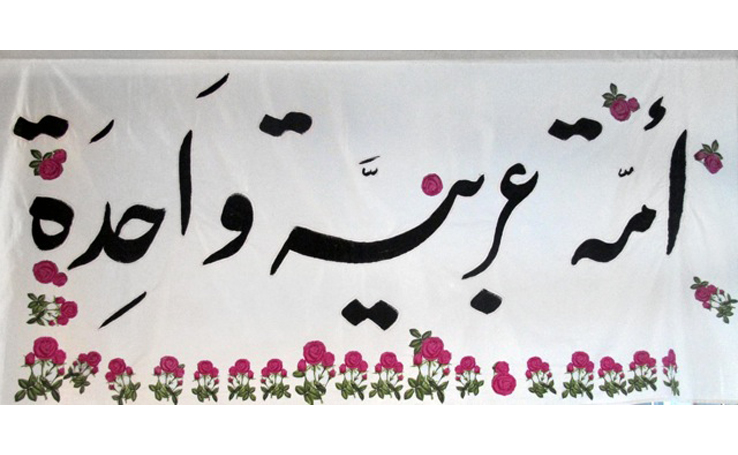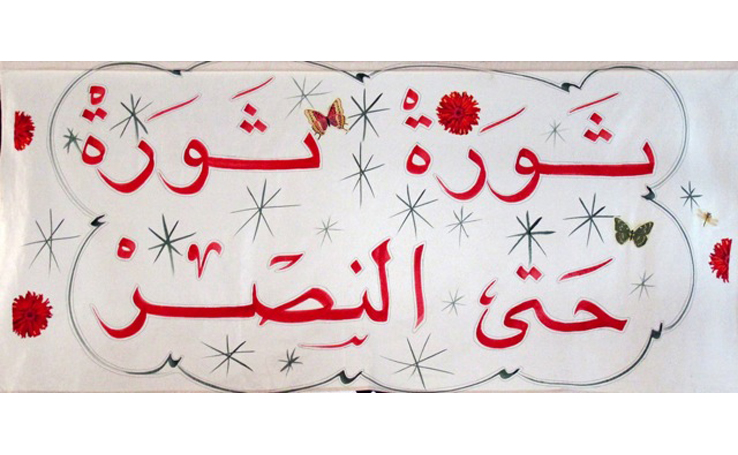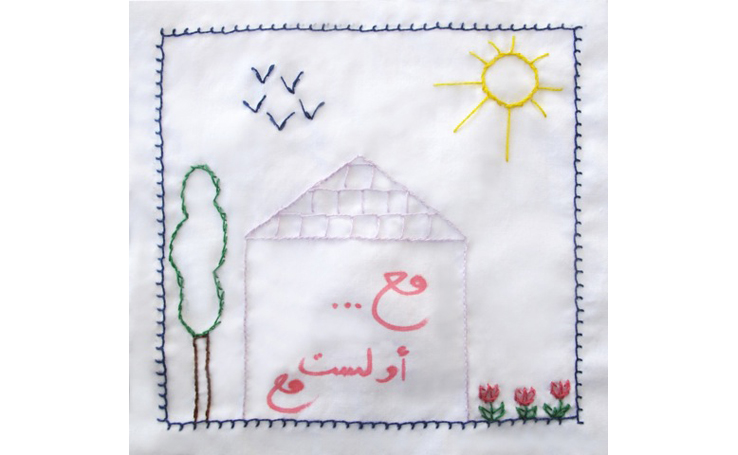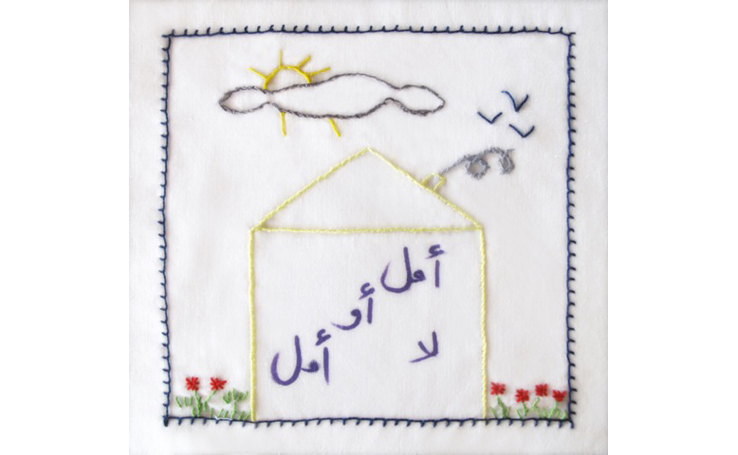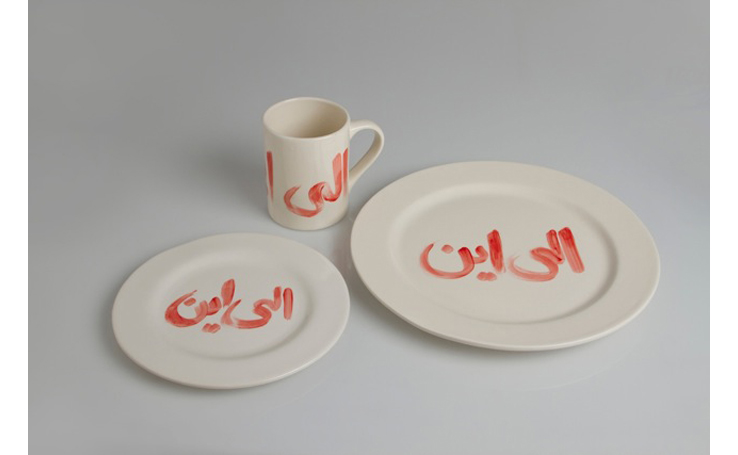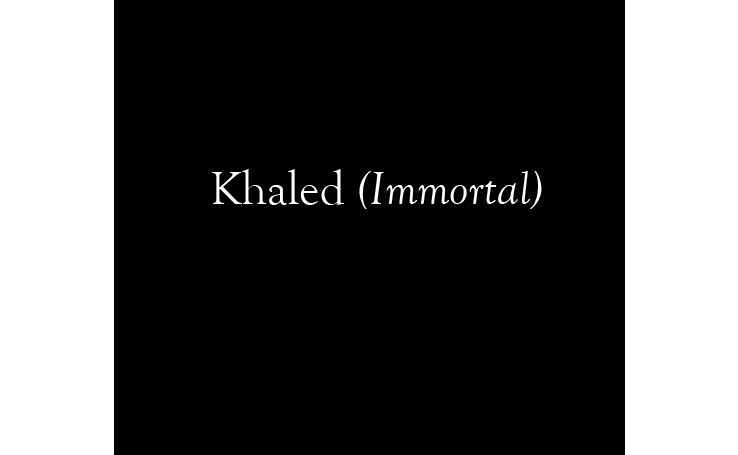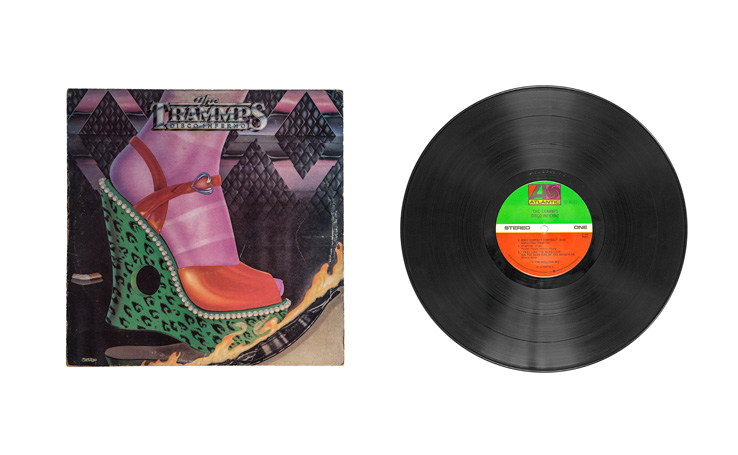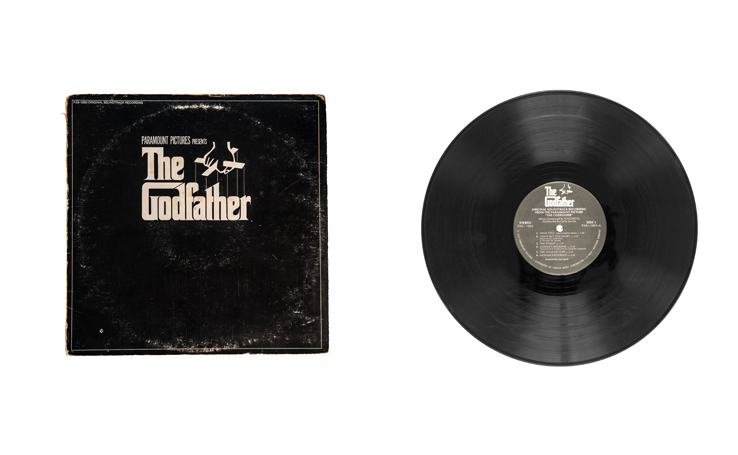
Nadine Kanso was born in Beirut, Lebanon in 1968. She graduated from the Lebanese American University with degrees in Communication Arts and Advertising Design. In 2006, Nadine was invited to exhibit at the Victoria and Albert Museum in London as part of a group exhibition entitled "Arabize Me." The artist’s photography and collage work has been exhibited in numerous fairs. She has dealt with themes of identity and nationalism, reflecting upon her native Lebanon and her adopted city of Dubai. In November 2010, the artist was commissioned by Louis Vuitton to create a series that celebrated Dubai’s relationship with the ocean and the sport of sailing. The exhibit was auctioned for charity by Bonhams. Alongside her photography, Nadine Kanso created “Bil Arabi,” a jewelry line inspired by the Arabic alphabet. “Bil Arabi” was showcased in Design Miami 2008.
Makan Fi Al Zakerah
Nadine Kanso’s “Makan fi al Zakerah” (Memory of a Place) series takes the artist back to her old neighborhood in Beirut. Kanso employs black and white photography to capture nostalgic images of the “dukkan,” or neighborhood corner store. Collaged on to the photographs are intricate cutouts, collected from magazines published in 1968, the year of Kanso’s birth, and the beginning of her memory of this place. The resulting image obscures the demarcation between memory and reality.
Beirut…On Fire
Nadine Kanso presents the duality of the words “Beirut…on fire” in her “Wal3aneh…Beirut” series. The compositions are starkly divided – an upper band of black and white and a lower band in color.
“Beirut…on fire” has deeply political connotations as the viewer is confronted with black and white images of graffiti in the city. Social and political messages crudely emblazoned across the walls provide a sharply contrasting backdrop to the images of nonchalant partygoers that comprise the lower half of the compositions. “Beirut…on fire” takes on an altogether different meaning detached from the socio-political landscape, referencing the glamour, excess and revelry associated with the city. The two sides of Nadine Kanso’s native city intersect to make up the whole. Only by having both views does the audience witness the complete picture of Beirut.
Kanso’s juxtaposition of black and white with color distorts the viewer’s perception of time. Images of partygoers in color has a real-time element, whereas black and white carries historical implications. The artist plays with perceptions of memory as the images in color are closer to the memories of Beirut’s golden days than the black and white images that appear documentary in style.
Makan Fi Al Zakerah 2
Nadine Kanso’s “Makan Fi Al Zakerah 2” (Memory of a Place) photography series captures images of today’s Beirut and highlights with an eerie familiarity the resemblances they have with times long past. Kanso’s longing for her native Beirut is powerful in her honest depiction of dilapidated buildings in its older neighborhoods, juxtaposed with words and images from publications of the 1950’s, 60’s and 70’s. The artist puts forth a compelling comparison of Beirut’s glory days with the reality of contemporary Lebanon. Images of elegant men and women peer out from the balconies of once luxurious buildings, most likely similar to those they once occupied. Words and phrases from these publications of times gone by resonate with the spirit, energy and issues that are relevant in today’s world.
Ah Ya Arab
Nadine Kanso's installation, entitled “Ah Ya 3Arab,” brings the energy of the street into the intimacy of the home. Kanso’s metaphor of a family dinner table and the revolutionary language that accent it subvert traditional associations of the safety and intimacy of private domestic life.
Kanso’s chairs, upholstered in traditional fabrics, are not discarded, but rather sourced from different homes. Representative of the Arab street, the chairs come from different walks of life, yet are seated together at the same table. Revolutionary phrases recontextualized in a domestic setting are unnerving and even disjointed fragments of sentences still have the power to evoke the powerful emotion on the street.
The private and the public merge in the installation, with framed slogans in the style of “home sweet home” embroidery meeting revolutionary banners, obscured behind garish barbed wire, jarringly out of place in the domestic setting.
Although Kanso’s table is charged with revolutionary slogans, the title of her installation and the statement it carries, “Oh, Arabs,” is draped over the table in revolutionary black and red calligraphy. “Ah Ya 3Arab” is a hopeful sigh for reconciliation in a setting packed with radical rhetoric and demand for change.














